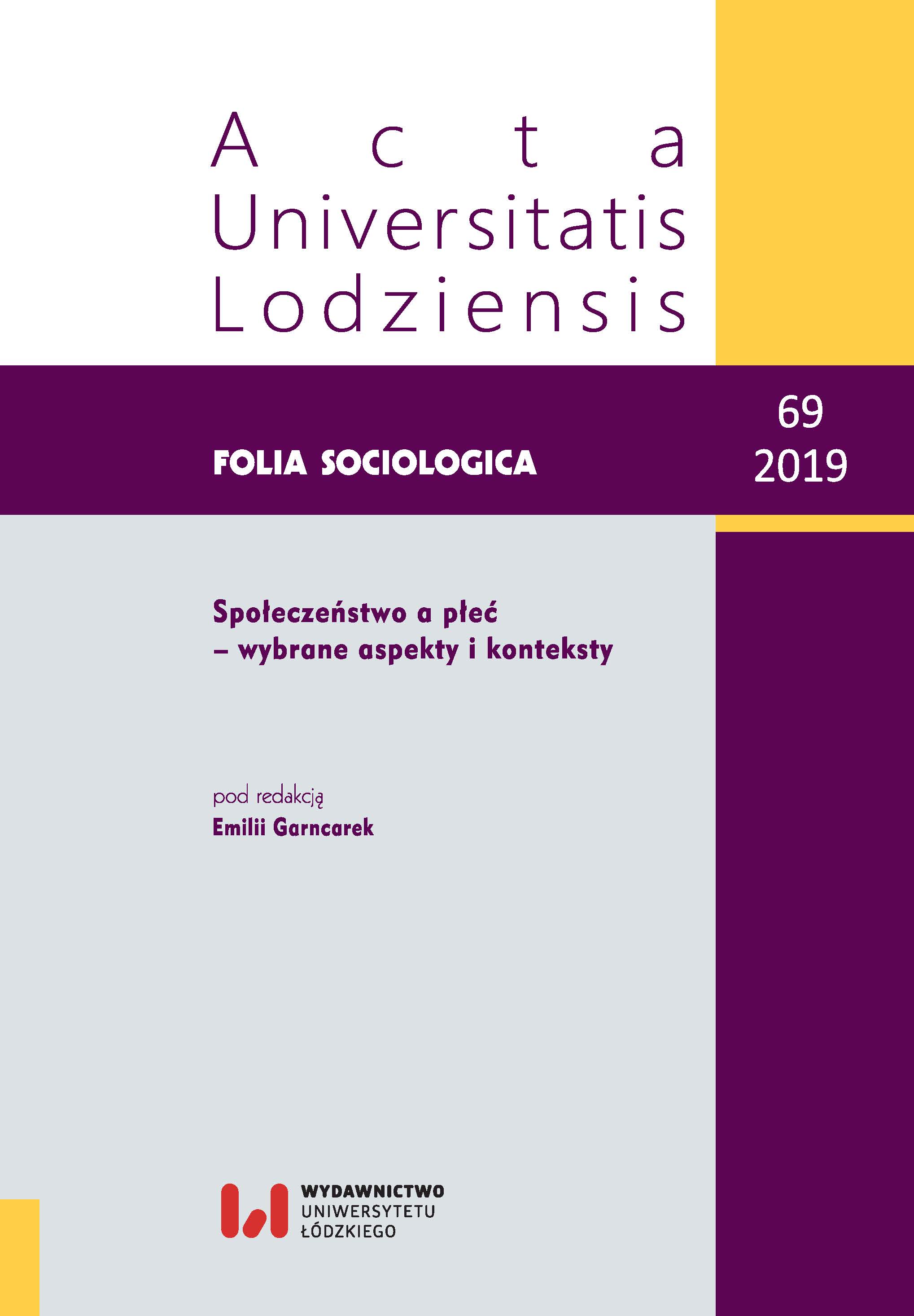Zjawisko gniazdownictwa w krajach Unii Europejskiej – skala, przyczyny, skutki. Casus Polski
DOI:
https://doi.org/10.18778/0208-600X.69.03Słowa kluczowe:
gniazdownictwo, gniazdownicy, bamboccioniAbstrakt
Przedmiotem rozważań w prezentowanym artykule będzie casus gniazdownictwa we współczesnym społeczeństwie polskim. Na potrzeby niniejszego tekstu terminem gniazdownictwo przyjęto określać egzystowanie młodych dorosłych w wieku 25–34 lata wspólnie z rodzicami w domu rodzinnym. Należy zasygnalizować, iż artykuł ma charakter komunikatu informacyjnego, mającego zasygnalizować dany problem społeczny, wprowadzić w problematykę, ukazać jego przyczyny i skutki oraz dokonać projekcji możliwych scenariuszy rozwoju tego zjawiska społecznego w przyszłości. Głównym celem podjętych rozważań jest ukazanie skali zjawiska gniazdownictwa w Polsce w odniesieniu do innych krajów Unii Europejskiej na przestrzeni lat 2005–2016, jego przyczyn oraz skutków. Podstawowe źródło badawcze stanowić będą dane dotyczące tego fenomenu społecznego publikowane przez Europejski Urząd Statystyczny (Eurostat).
Bibliografia
Arnett J. J. (2004), Emerging adulthood: The winding road from the late teens through the twenties, Oxford University Press, Oxford.
Google Scholar
Bieńko M., Kwak A., Rosochacka-Gmitrzuk M. (2017), Wciąż jeszcze w gnieździe rodzinnym? Socjologiczne spojrzenie na młodych dorosłych, Wydawnictwo Akademii Pedagogiki Specjalnej, Warszawa.
Google Scholar
Billari F. C., Liefbroer A. C. (2010), Towards a new pattern of transition to adulthood?, „Advances in Life Course Research”, t. 15, s. 59–75.
Google Scholar
Czerka E. (2007), Rodzinne uwarunkowania odraczania dorosłości u młodych mężczyzn, Oficyna Wydawnicza Impuls, Kraków.
Google Scholar
Douglass C. B. (2007), From duty to desire: Emerging adulthood in Europe and its consequences, „Child Development Perspectives”, nr 1(2), s. 101–108.
Google Scholar
Gierańczyk W. (2016), Sytuacja osób młodych w Polsce na tle państw europejskich, „Wiadomości Statystyczne”, R. LXI, s. 33–53.
Google Scholar
Goldenberg H., Goldenberg I. (2006), Terapia rodzin, Wydawnictwo Uniwersytetu Jagiellońskiego, Kraków.
Google Scholar
Pasternak-Malicka M. (2014), Aktywność zawodowa młodych osób na rynku pracy i ich skłonność do podejmowania nieformalnego zatrudnienia, „Ekonomia i Zarządzanie”, nr 3, s. 127–143.
Google Scholar
Piszczatowska-Oleksiewicz M. (2014), Polscy Gniazdownicy. O powodach, dla których dorosłe dzieci mieszkają z rodzicami, „Pogranicza. Studia Społeczne”, t. XXIV, s. 181–207.
Google Scholar
Shaputis K. (2003), The crowded nest syndrome: Surviving the return of adult children, Clutter Fairy Publishing, Olympia, Wash.
Google Scholar
Slany K. (2006), Alternatywne formy życia małżeńsko-rodzinnego w ponowoczesnym świecie, Nomos, Kraków.
Google Scholar
Szlendak T. (2010), Socjologia rodziny. Ewolucja, historia, zróżnicowanie, Wydawnictwo Naukowe PWN, Warszawa.
Google Scholar
Szlendak T. (2013), Single według Małgorzaty Sikorskiej, Tomasza Szlendaka i Sylwii Urbańskiej, [w:] K. Kuklińska (red.), Singlizm. Nowy styl życia w ponowoczesnym świecie, Trio, Warszawa.
Google Scholar
Zagórska W., Jelińska M., Surma M., Lipska A. (2012), Wydłużająca się droga do dorosłości, Wydawnictwo Uniwersytetu Kardynała Stefana Wyszyńskiego, Warszawa.
Google Scholar
Boyd M., Morris D., The crowded nest: Young adults at home, http://www.statcan.ca/english/freepub/11-008-XIE/2003001/articles/6552.pdf [dostęp 30.04.2018].
Google Scholar
Eurostat, http://appsso.eurostat.ec.europa.eu/nui/show.do?dataset=yth_demo_030&lang=en [dostęp 3.05.2018].
Google Scholar
http://my50plus.pl/50-i-60-latkowie-utrzymuja-swoje-dorosle-dzieci/ [dostęp: 3.05.2018].
Google Scholar
http://natemat.pl/45957,maminsynki-ponad-2-8-mln-doroslych-polakow-mieszka-z-rodzicami [dostęp 2.05.2018].
Google Scholar
http://www.fokus.tv/news/umowy-smieciowe-czym-sa-dlaczego-sa-tak-popularne/1732 [dostęp 12.05.2018].
Google Scholar
http://www.newsweek.pl/polska/dzieci-mieszkajace-z-rodzicami-bamboccioni-newsweek-pl,artykuly,280402,1.html [dostęp 30.04.2018].
Google Scholar
http://www.porp.pl/artykul/przyczyny-trudnosci-osob-mlodych-na-rynku-pracy.html [dostęp 11.05.2018].
Google Scholar
https://wiadomosci.wp.pl/mezczyzni-sa-mniej-samodzielni-wciaz-dominuja-wsrod-gniazdowni¬kow-6025271179928193a [dostęp 30.04.2018].
Google Scholar
https://www.tygodnikprzeglad.pl/wieczne-dzieci/ [dostęp 30.04.2018].
Google Scholar
Strateg (2015), System Monitorowania Rozwoju, http://strateg.stat.gov.pl/Home/ [dostęp 30.04.2018].
Google Scholar
Pobrania
Opublikowane
Jak cytować
Numer
Dział
Licencja

Utwór dostępny jest na licencji Creative Commons Uznanie autorstwa – Użycie niekomercyjne – Bez utworów zależnych 4.0 Międzynarodowe.










